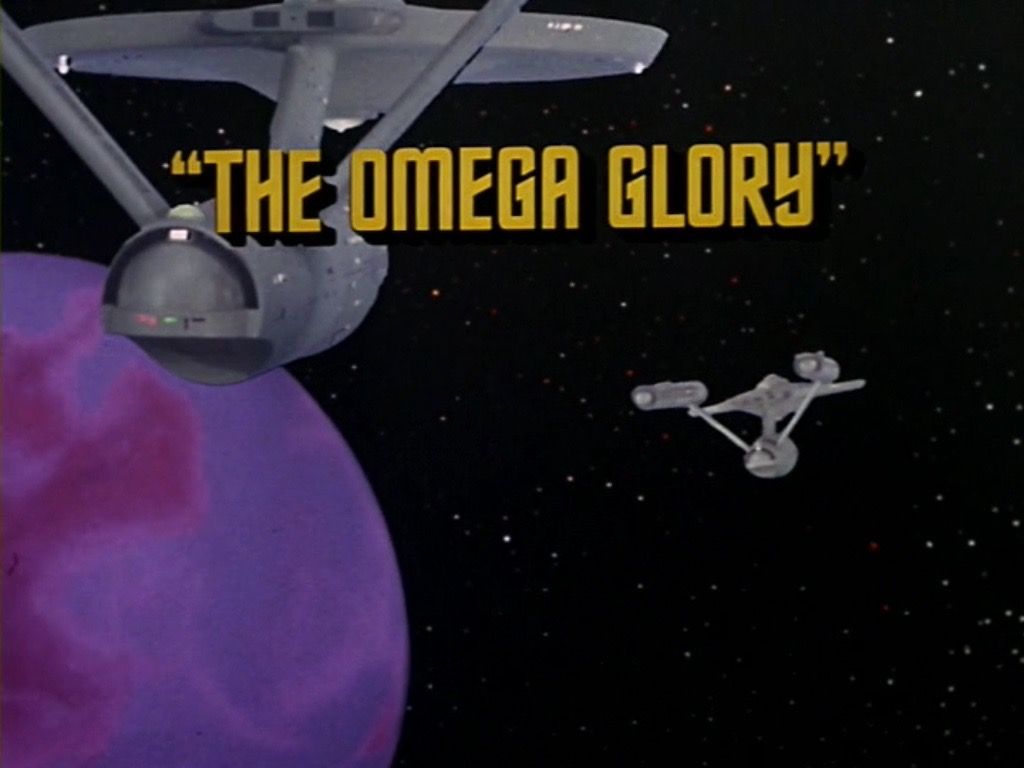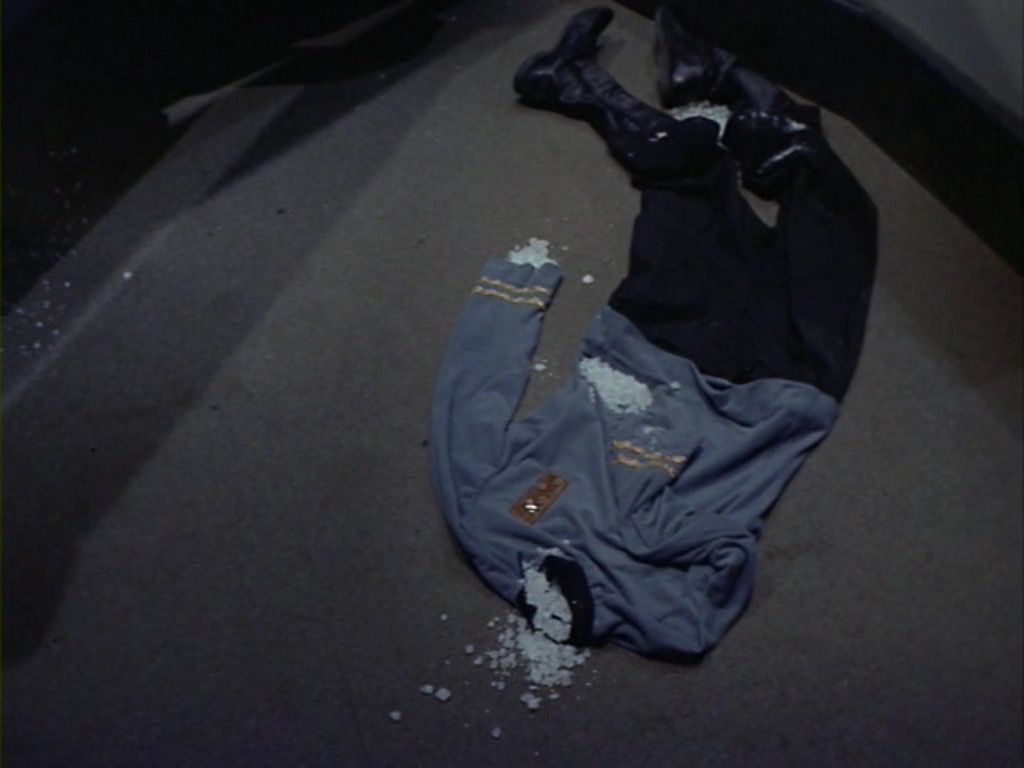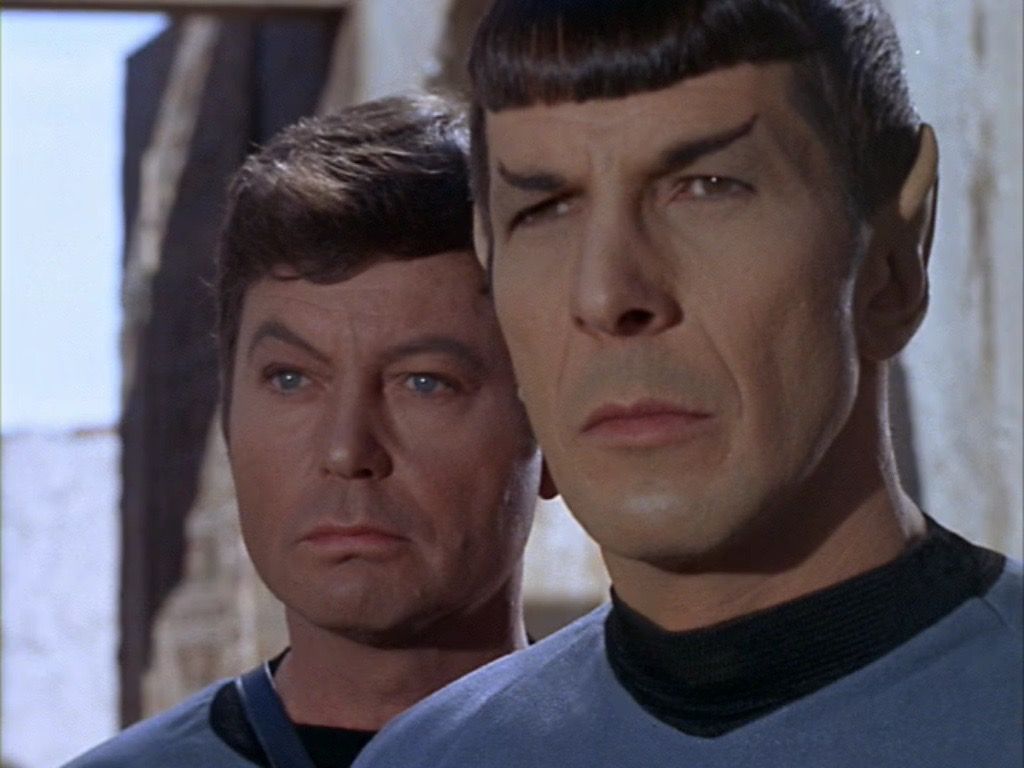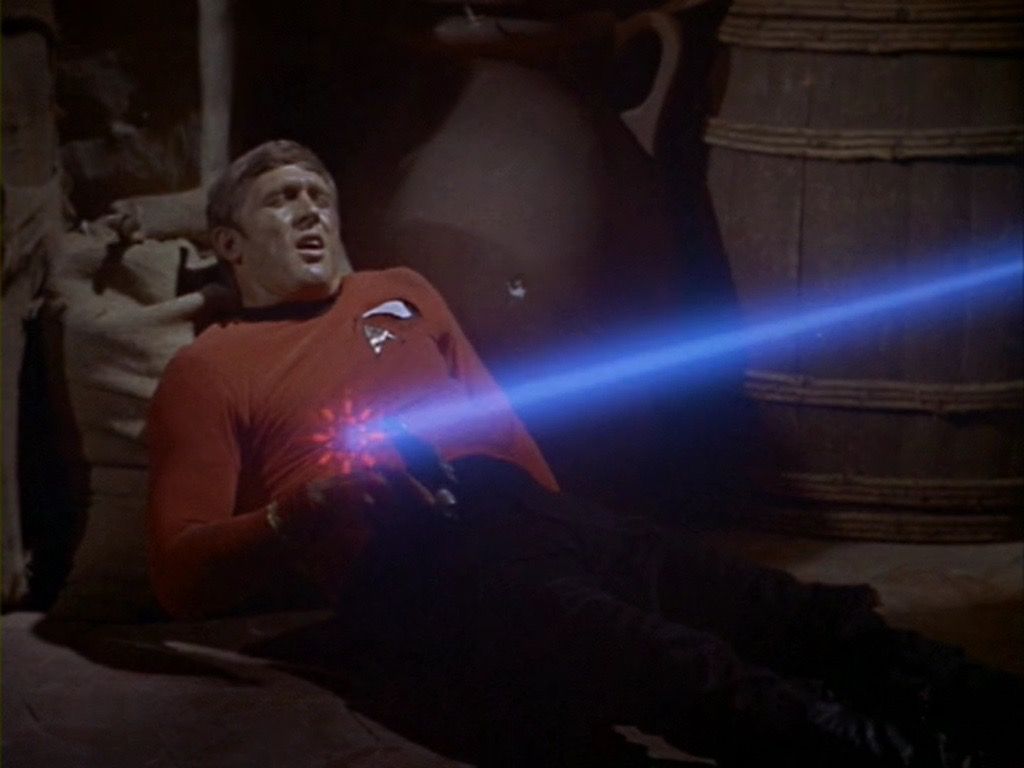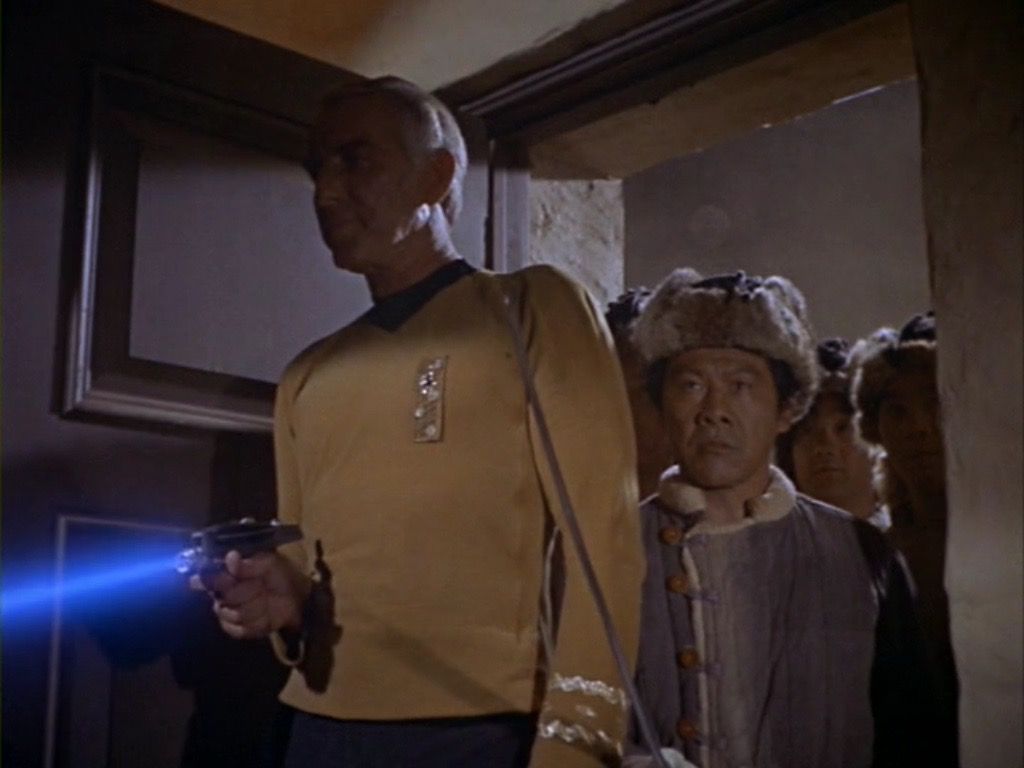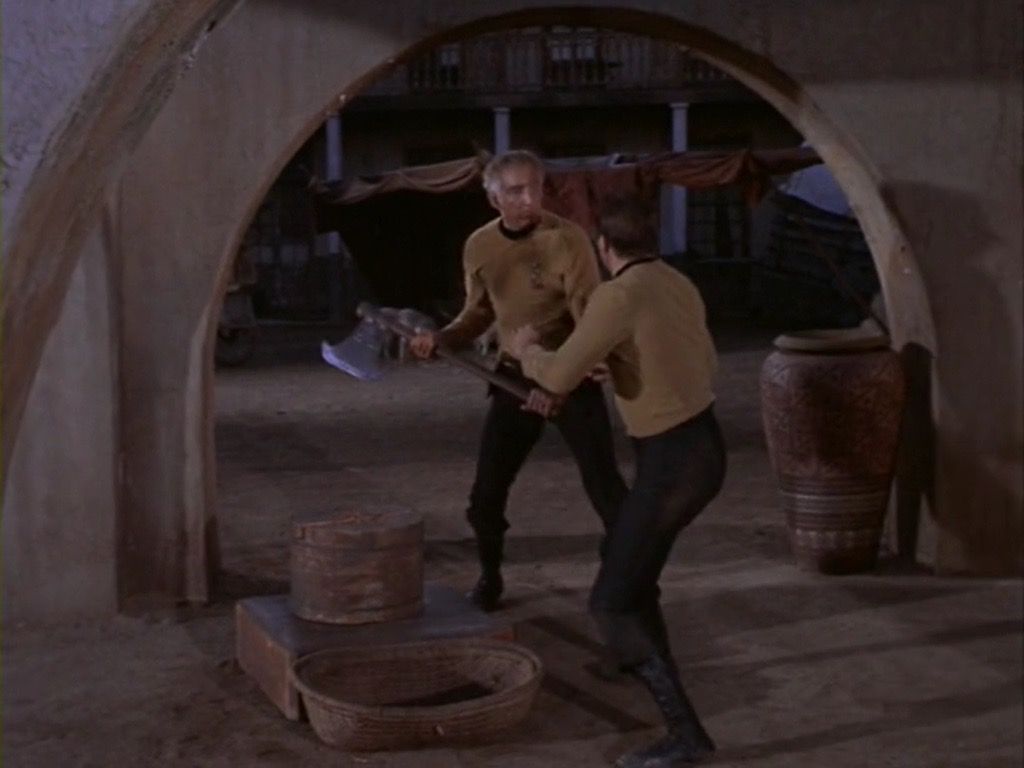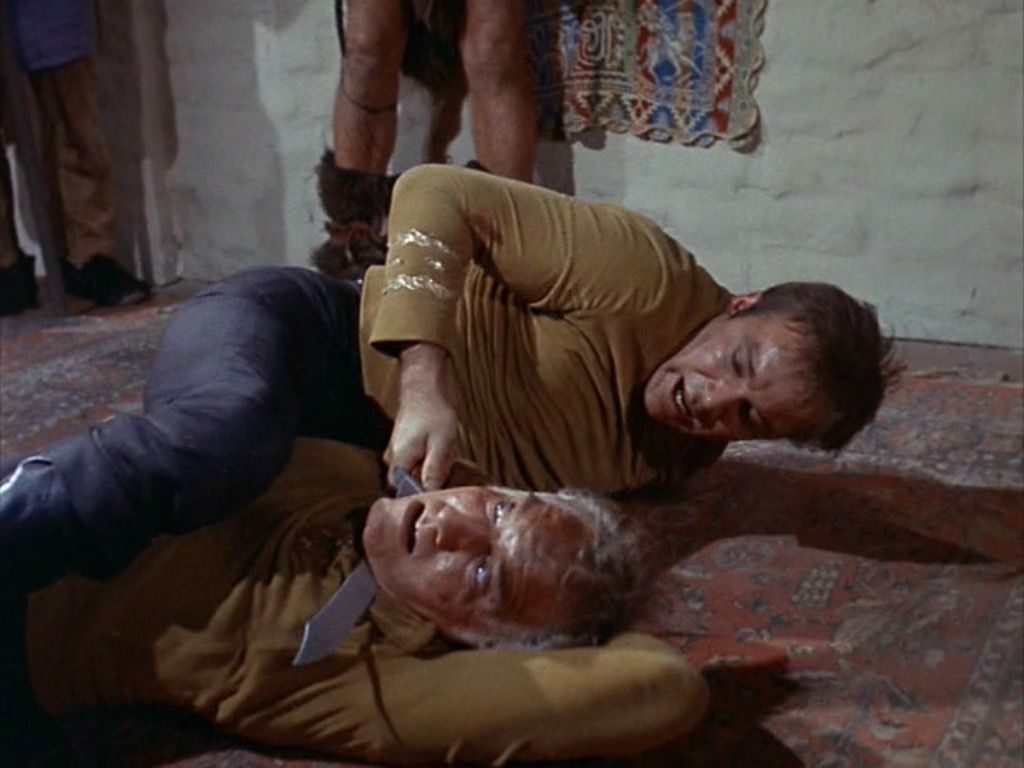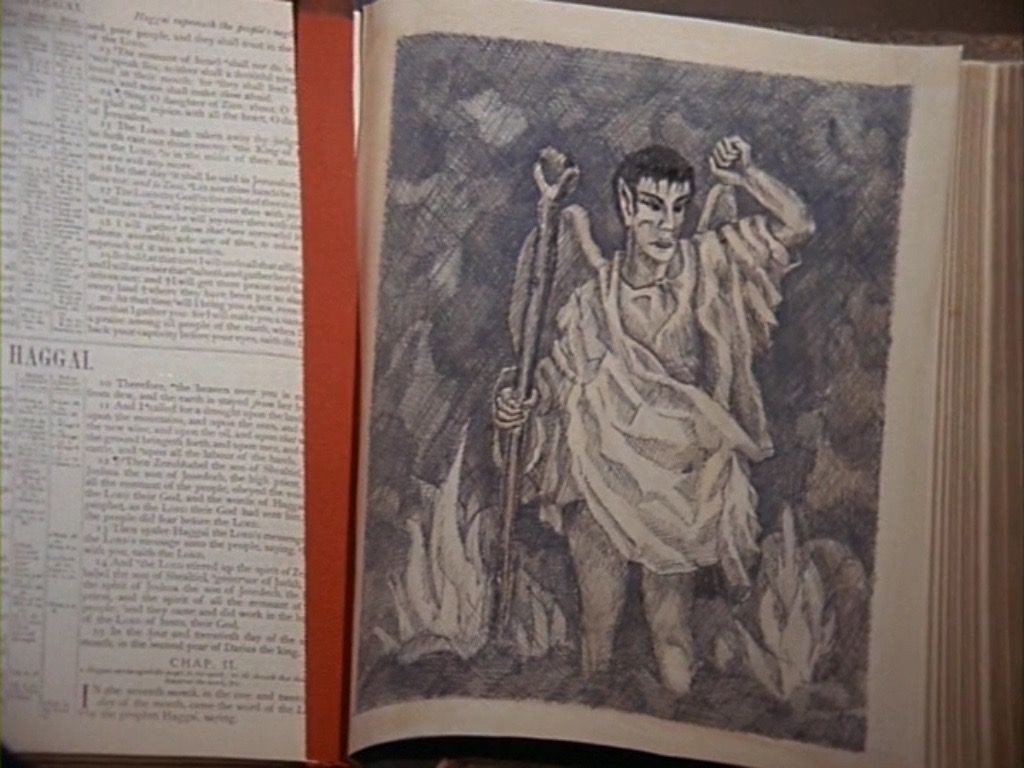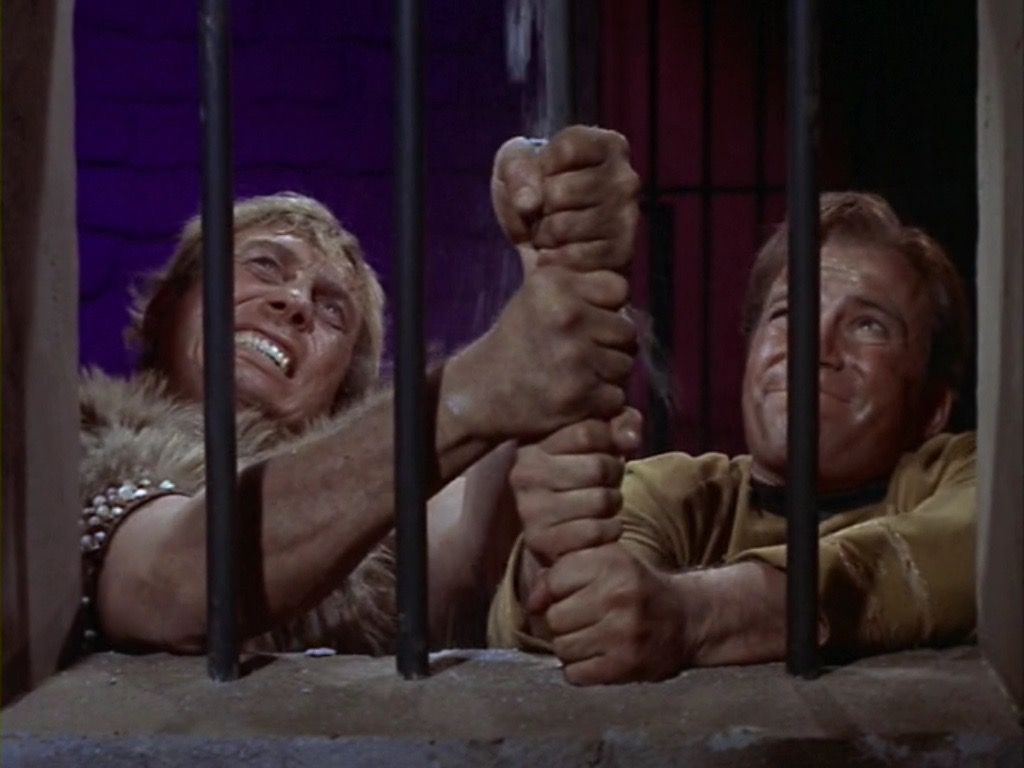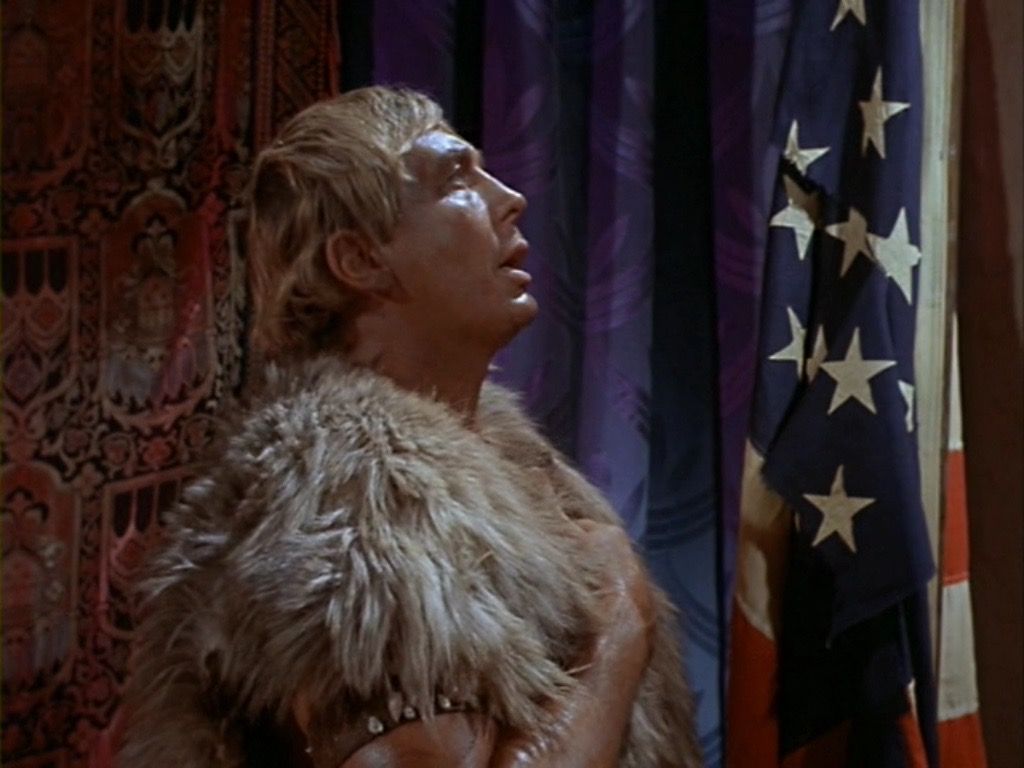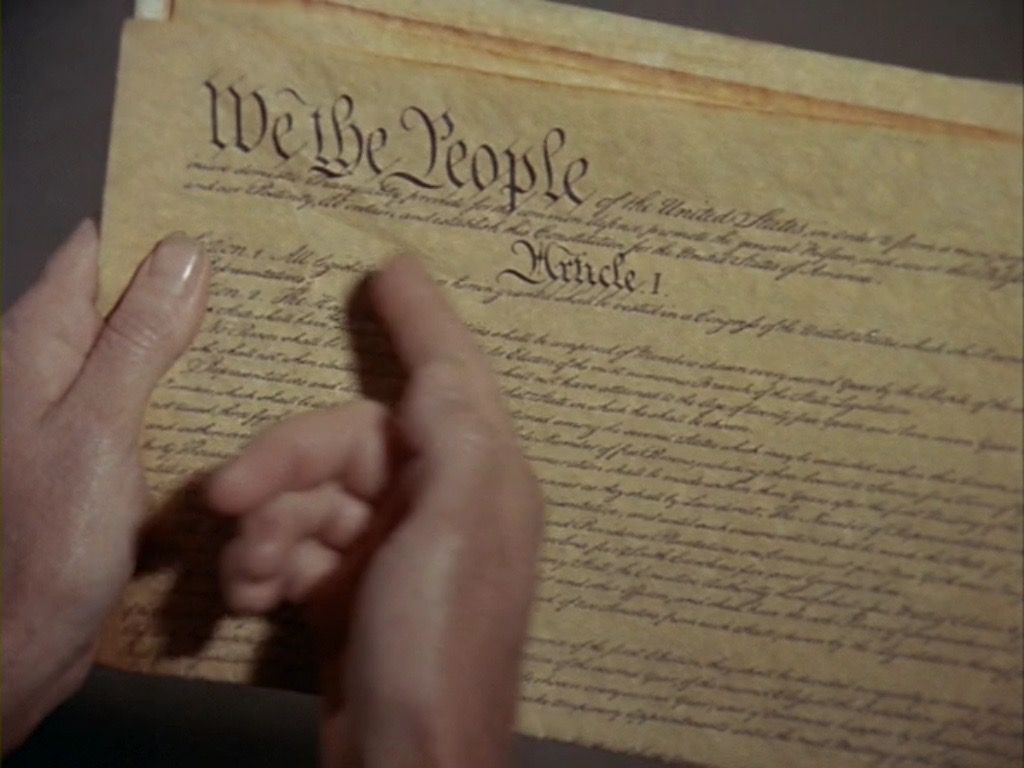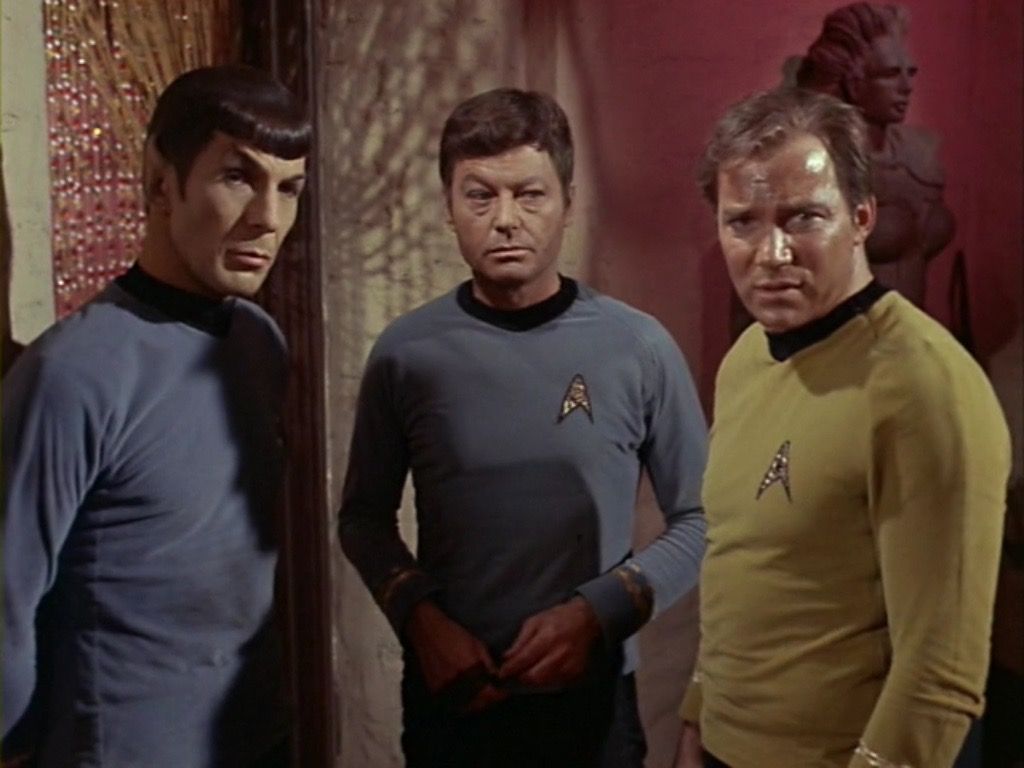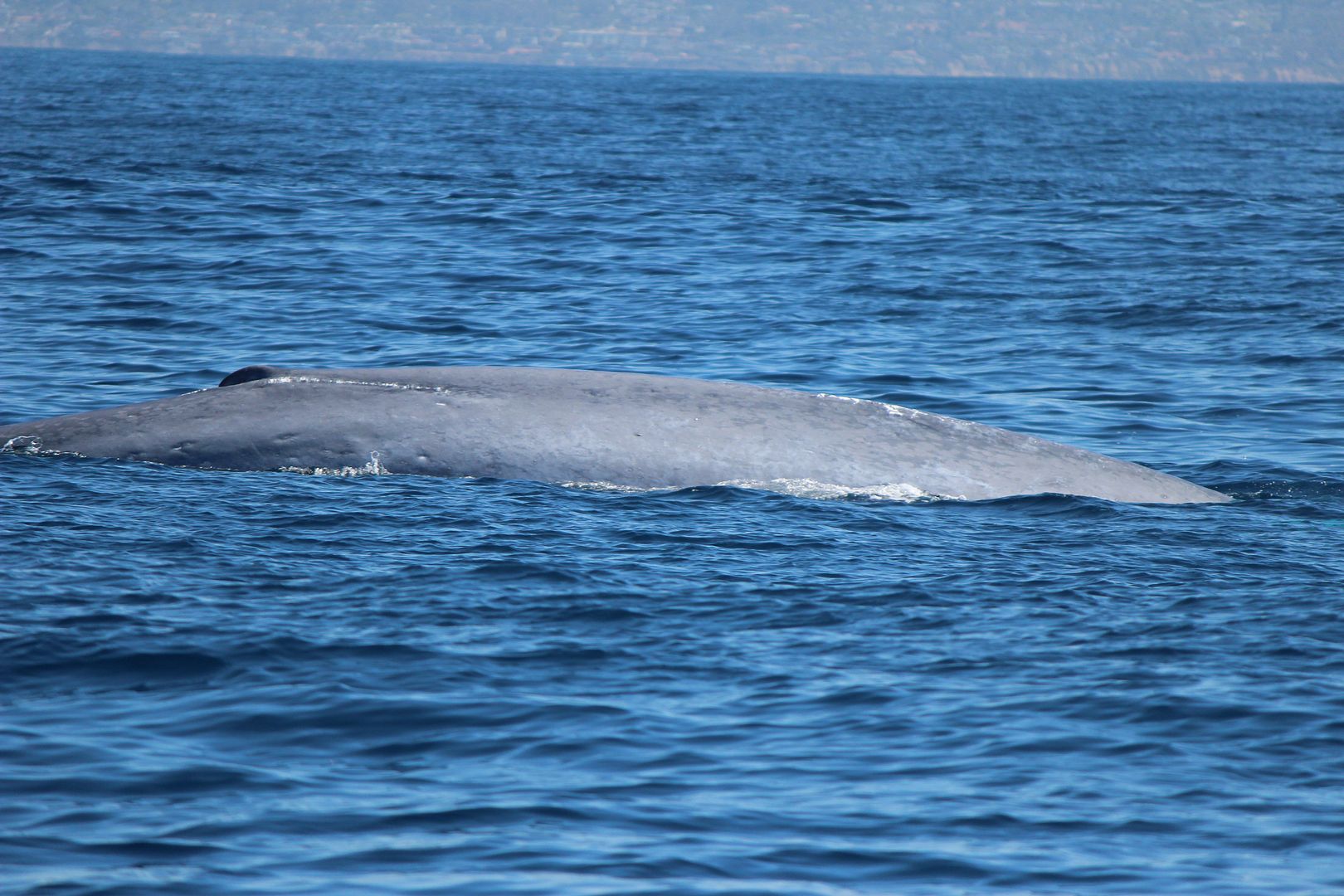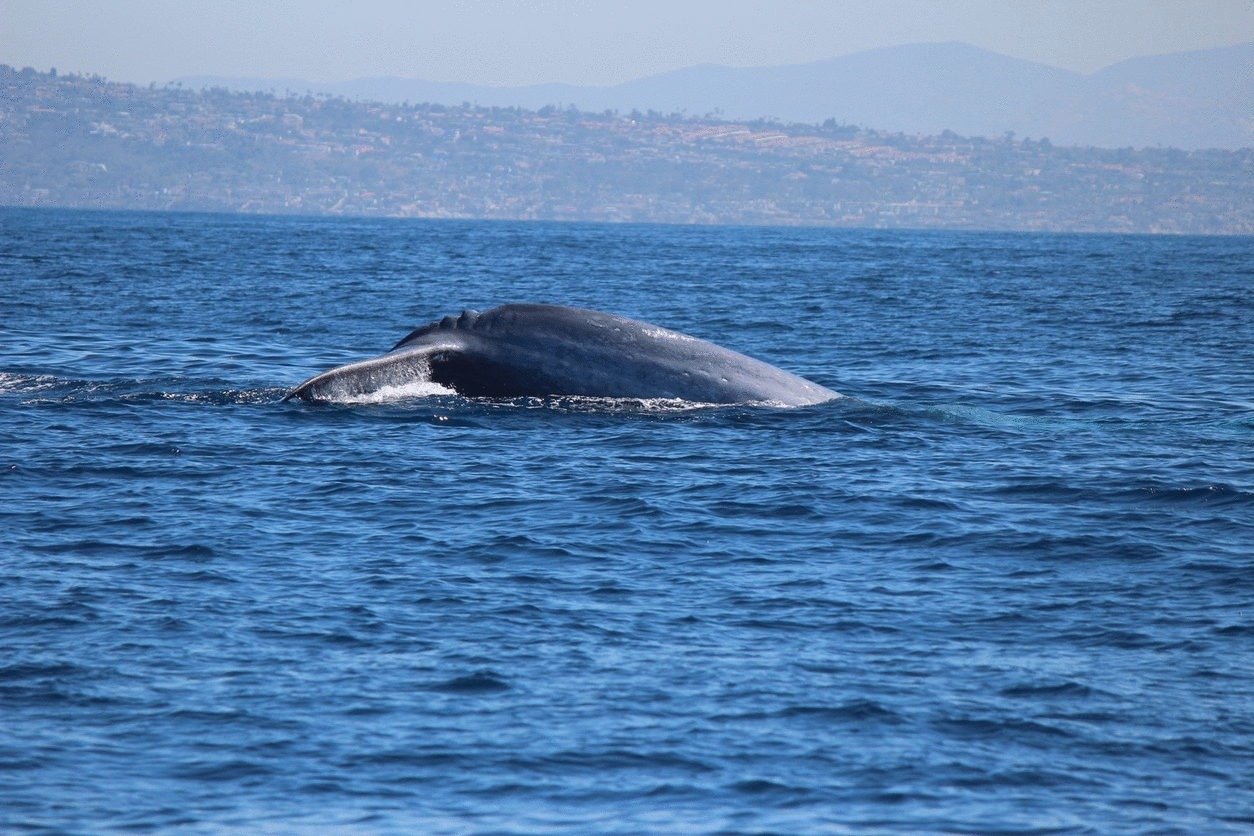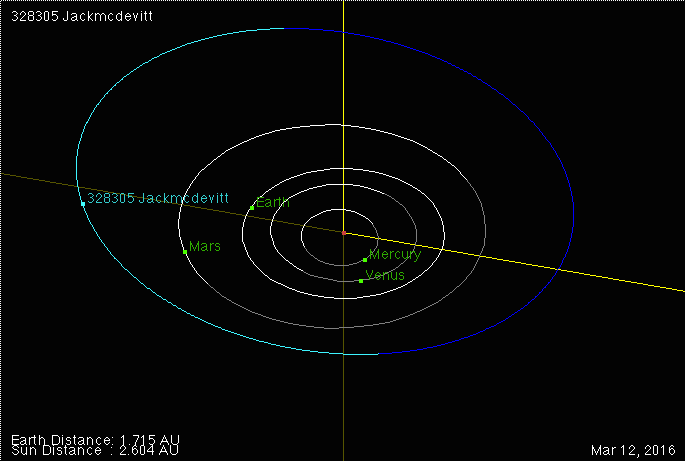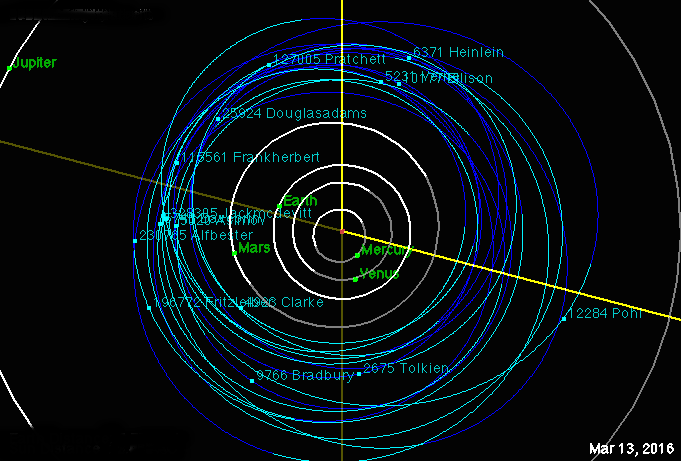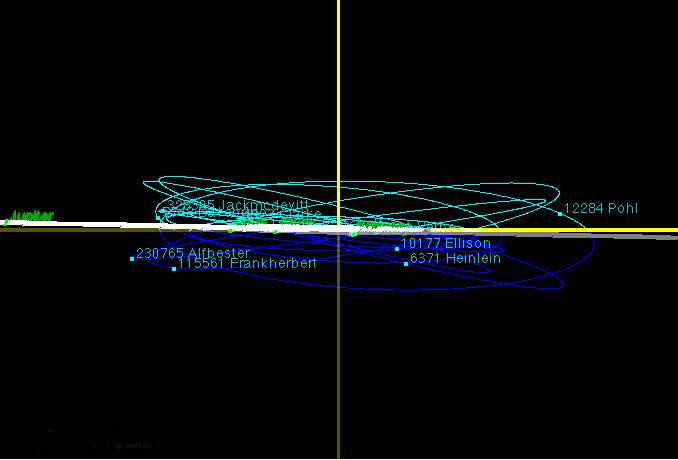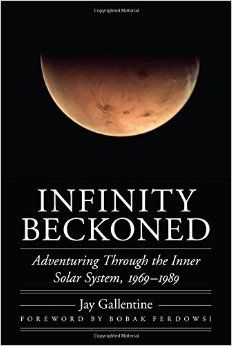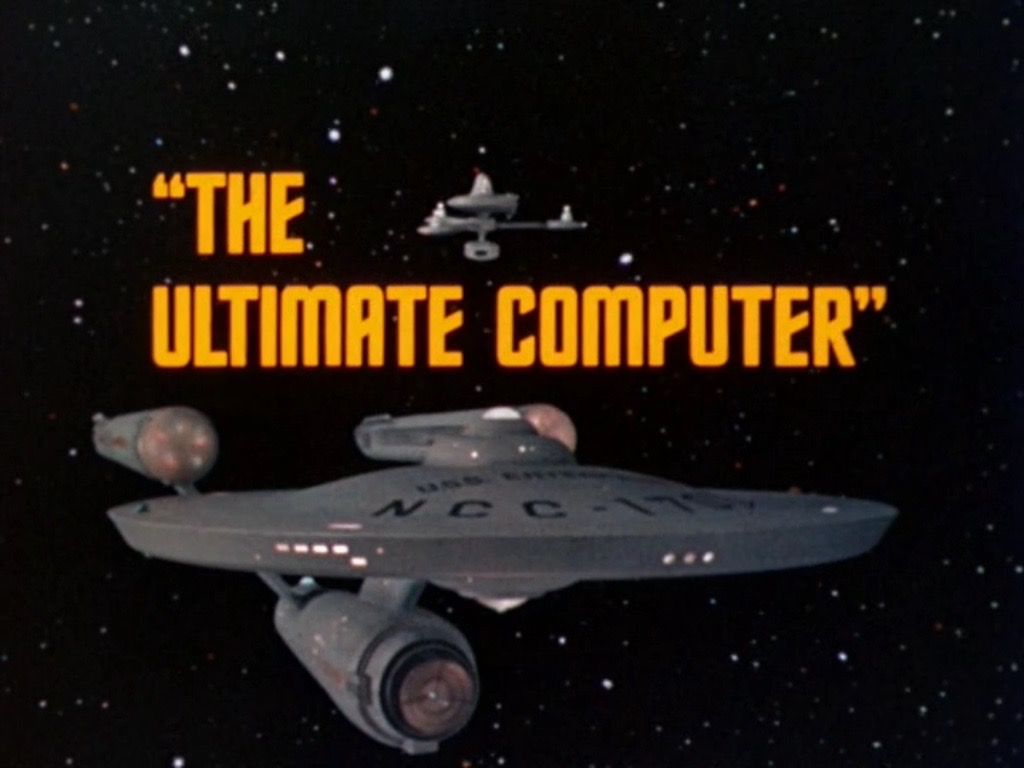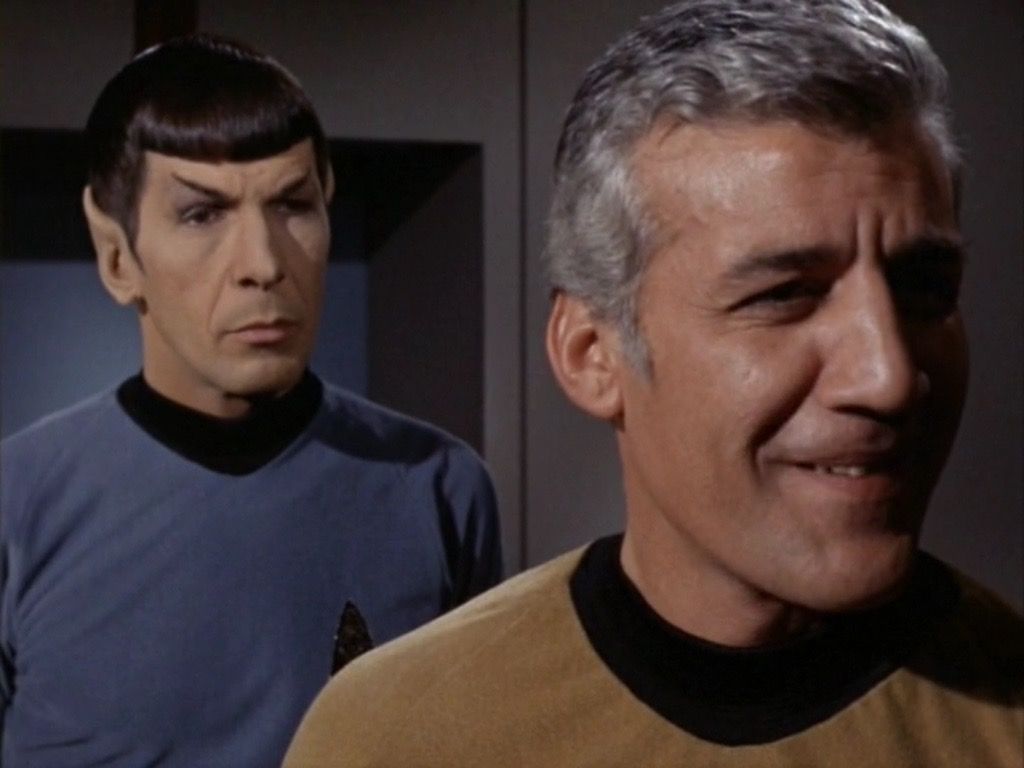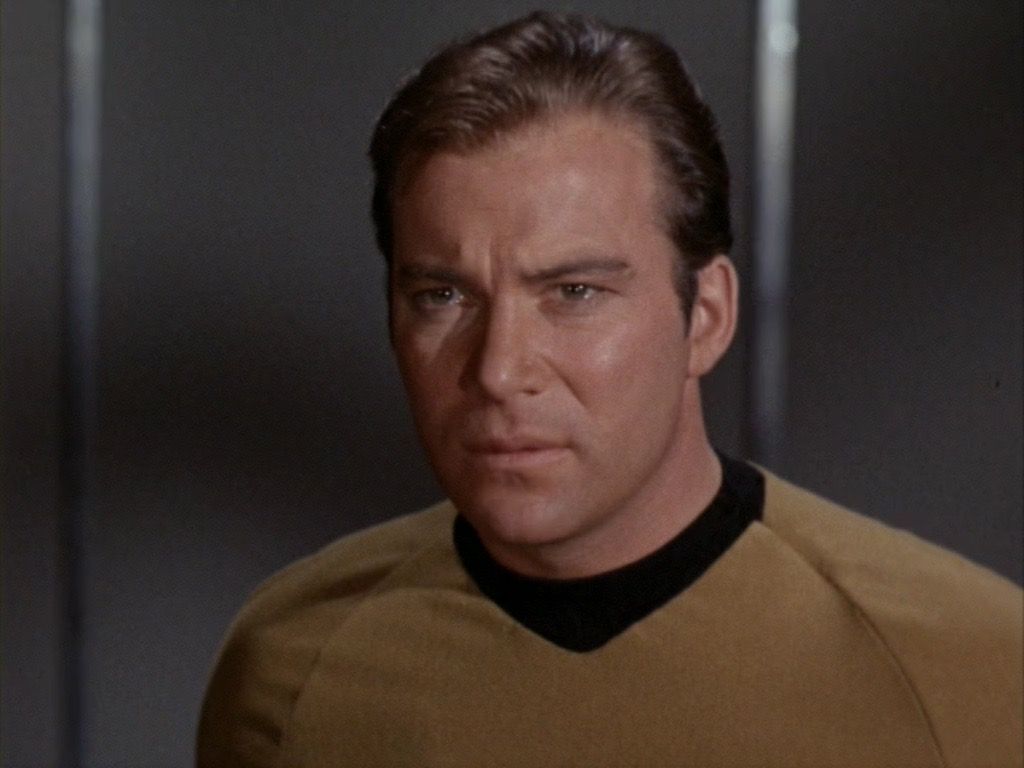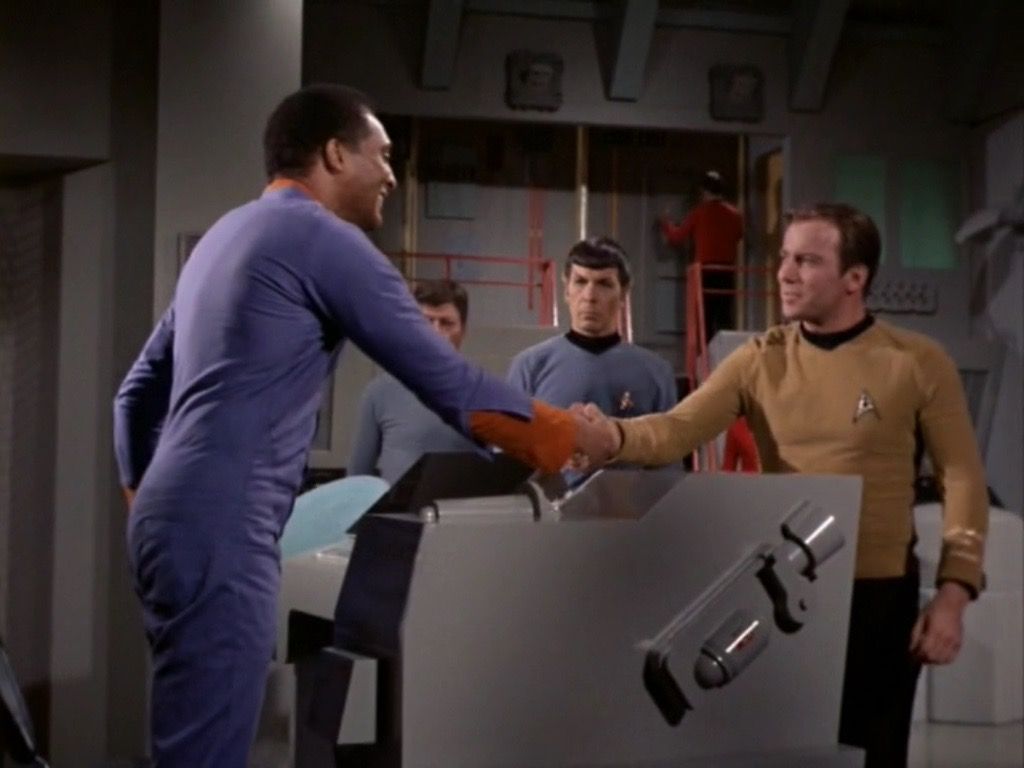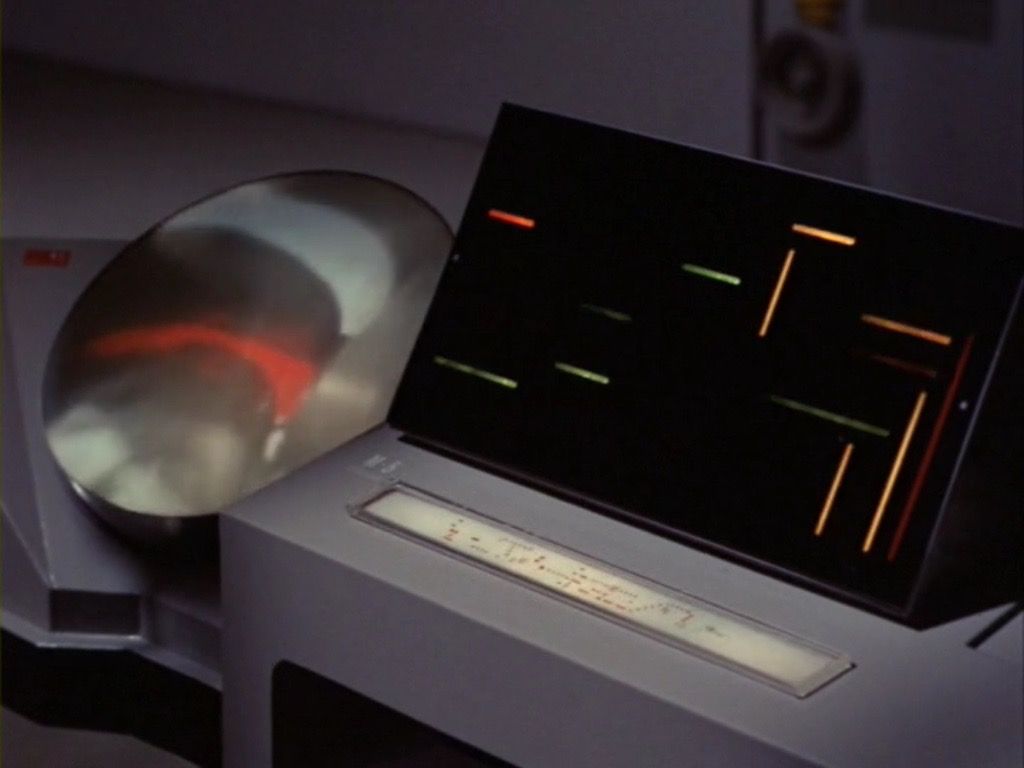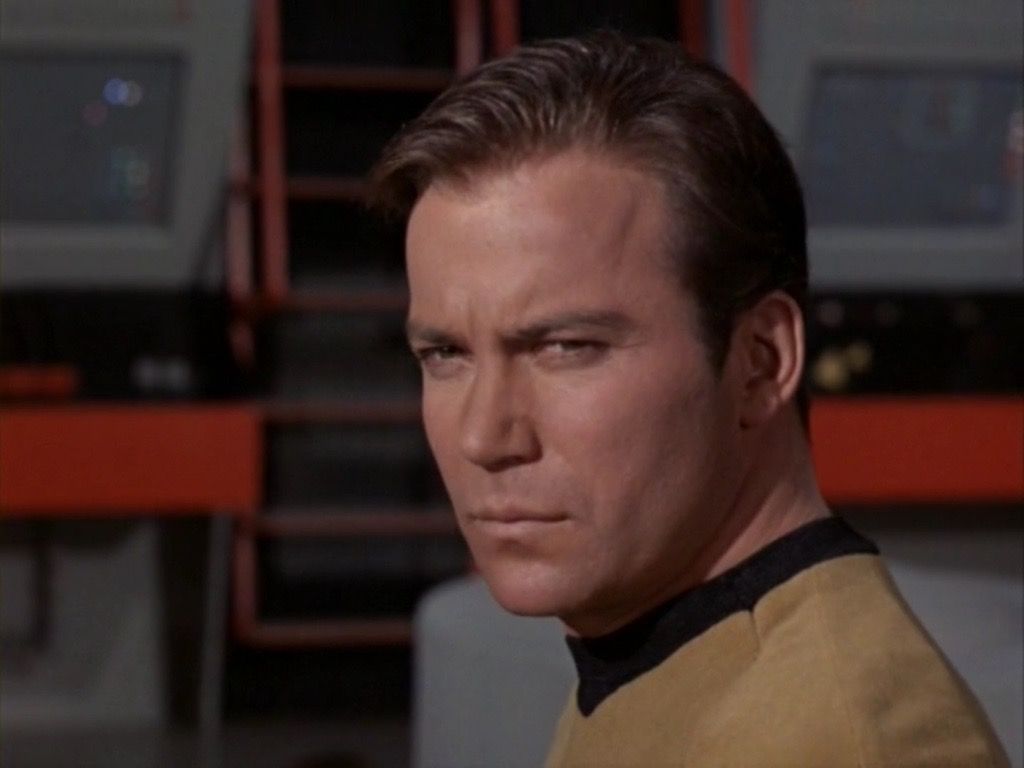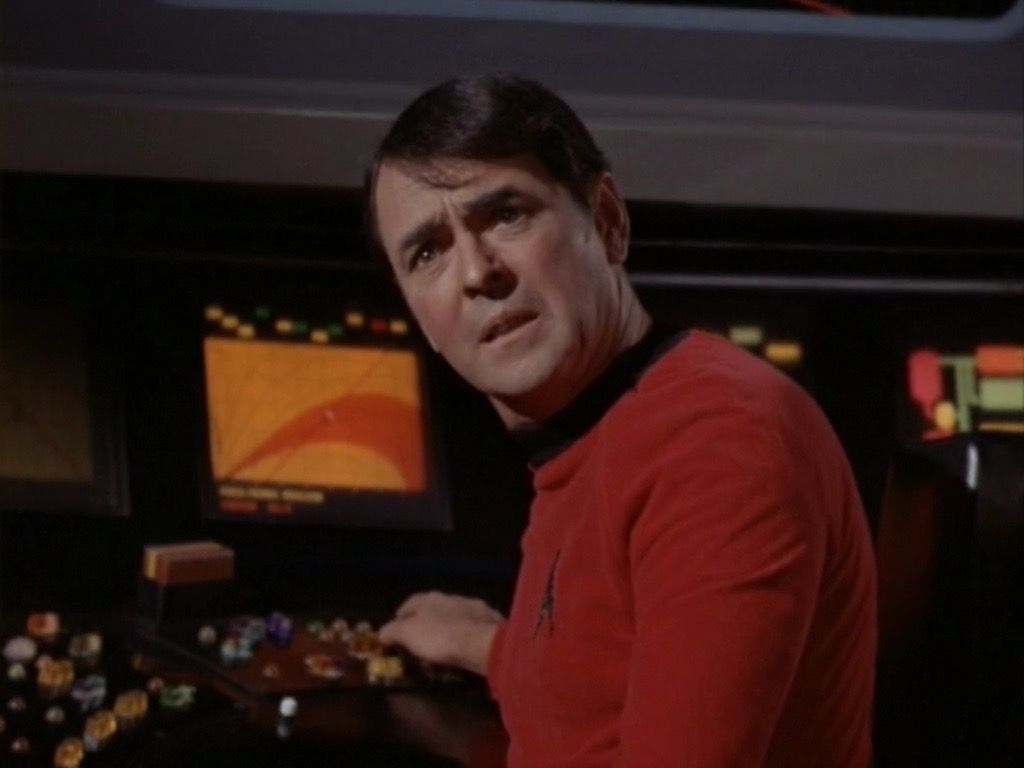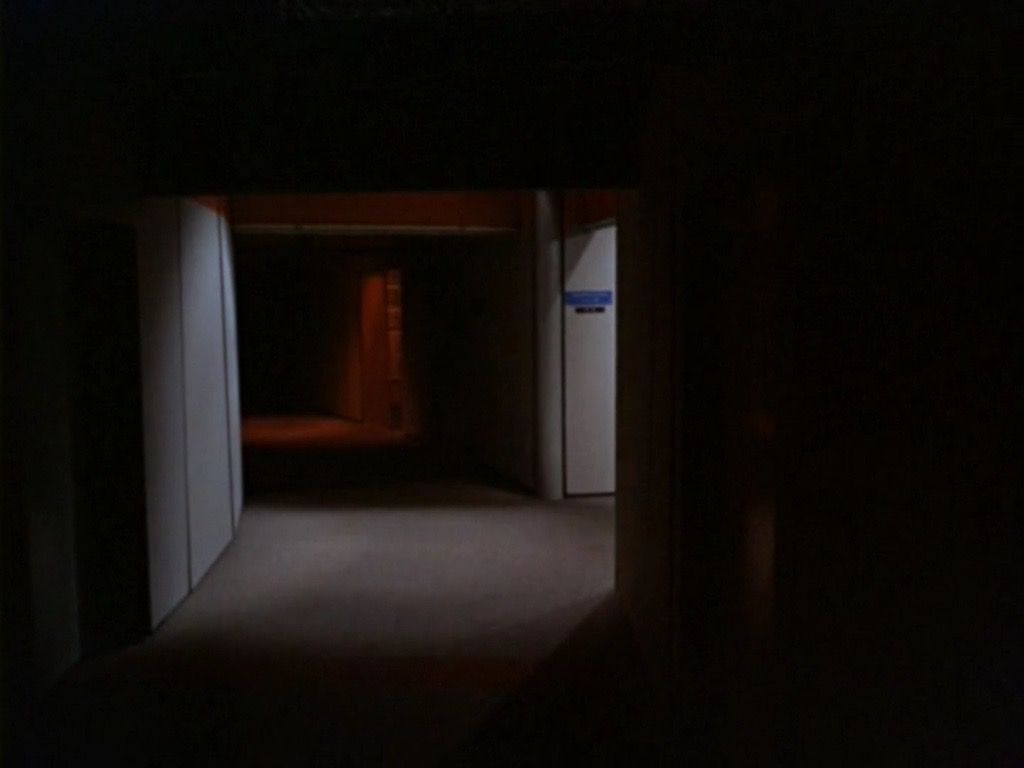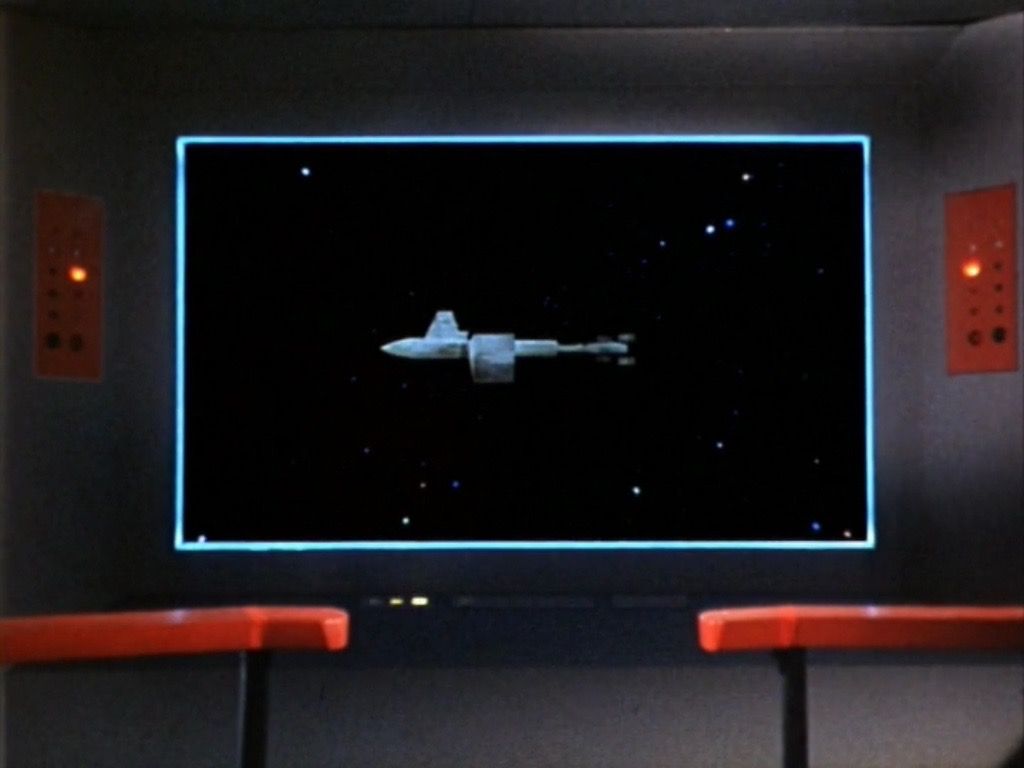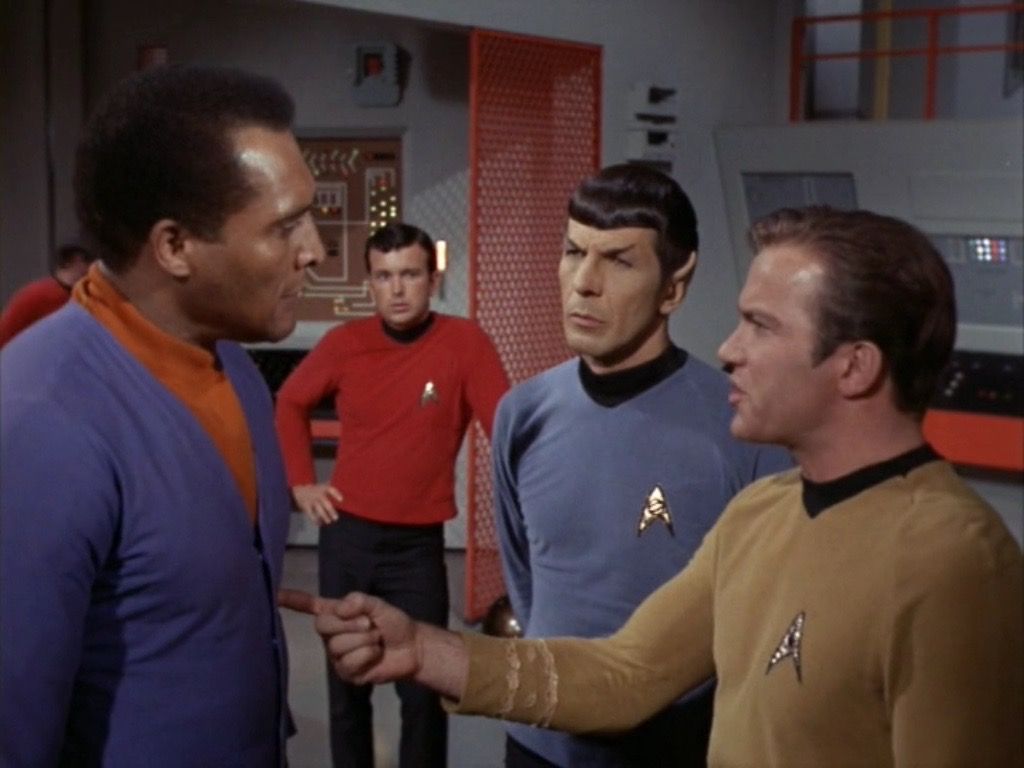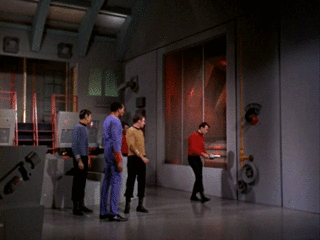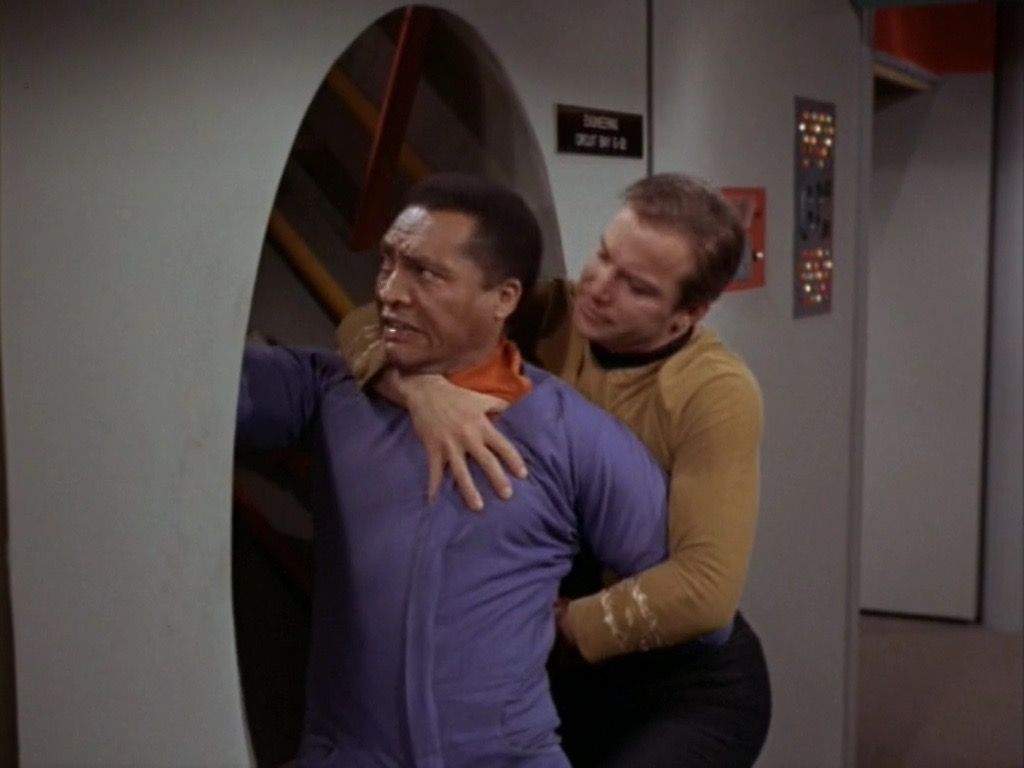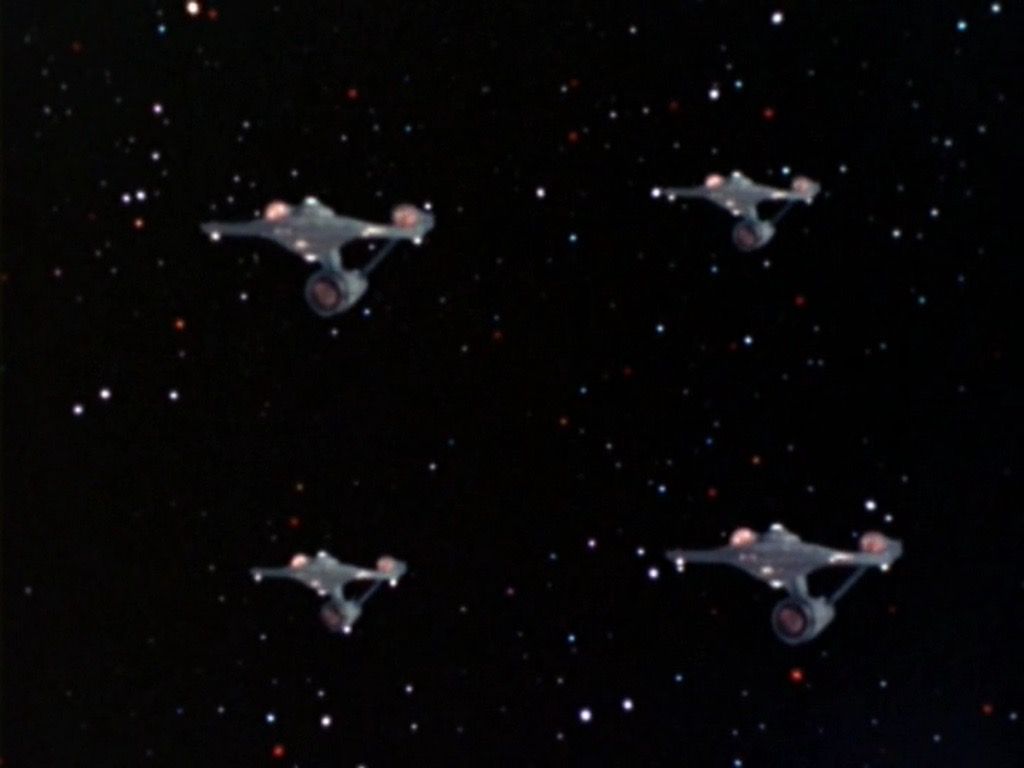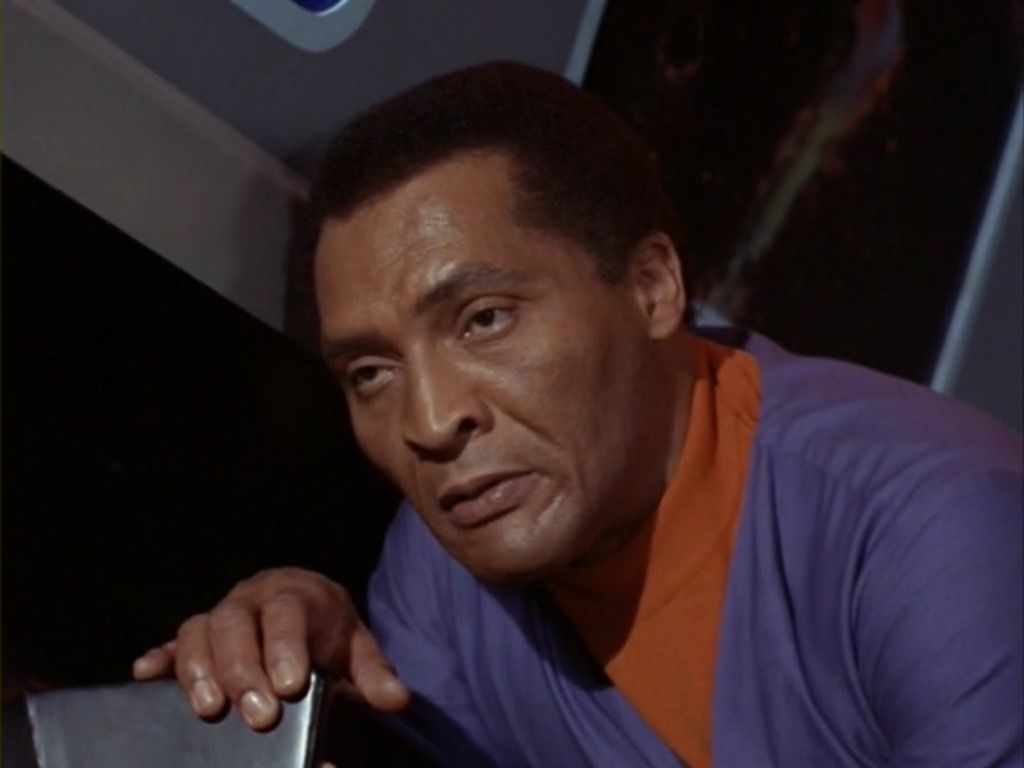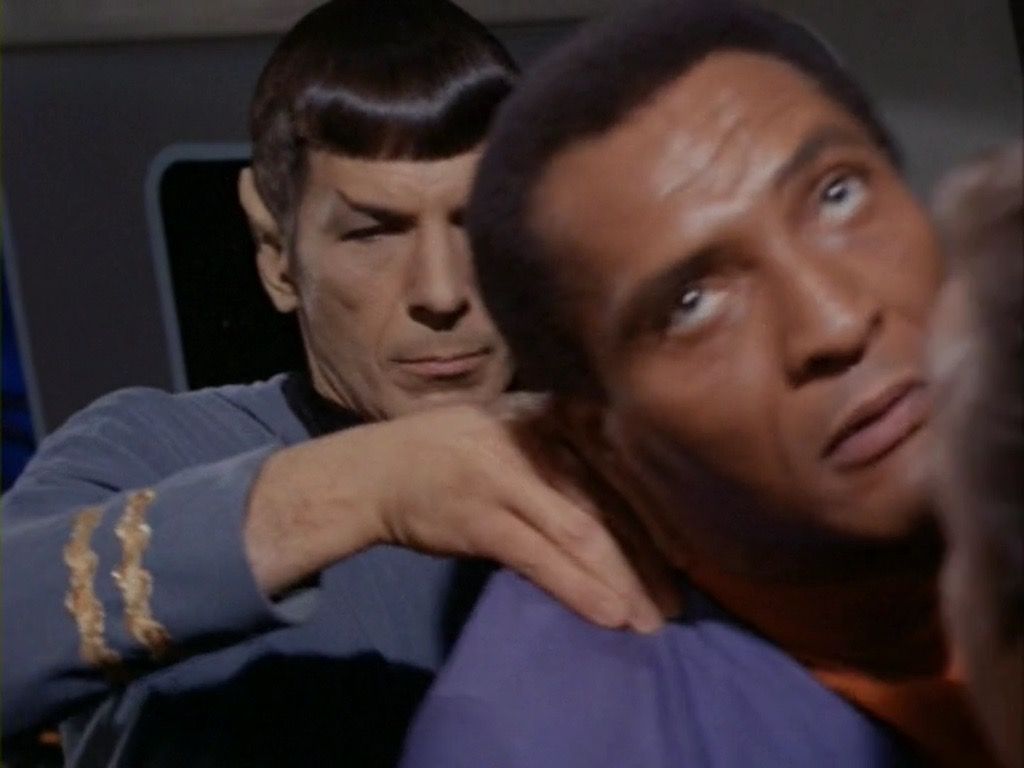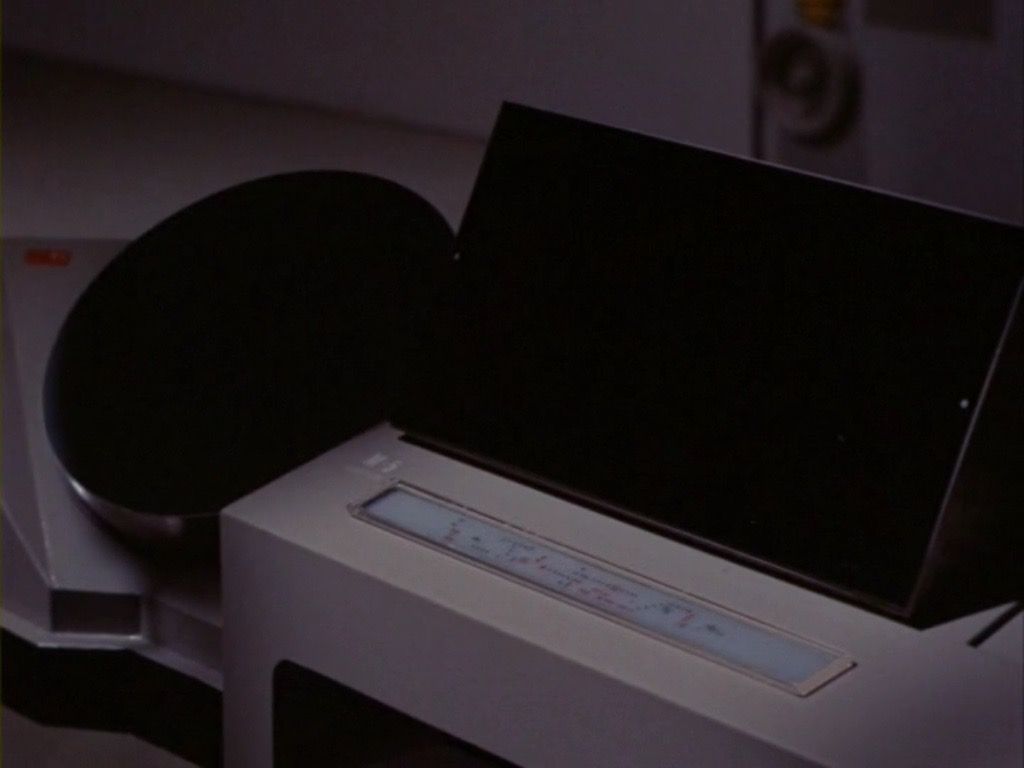It is time for another episode of Star Trek. Today it is:
The Omega Glory is a pretty good episode of Trek, until it isn't.
The Omega Glory has got a lot going for it. There's another Federation starship, the Exeter, with a crew that has been killed by an awesome plague where their bodies were crystalized.
There's the Exeter's captain, Ron Tracey (played by Morgan Woodward, who you might remember as Dr. Simon van Gelder in Dagger of the Mind), a man that has violated the Prime Directive by phasering hundreds of natives so that he can live long enough to find the secret to what he thinks is a fountain of youth.
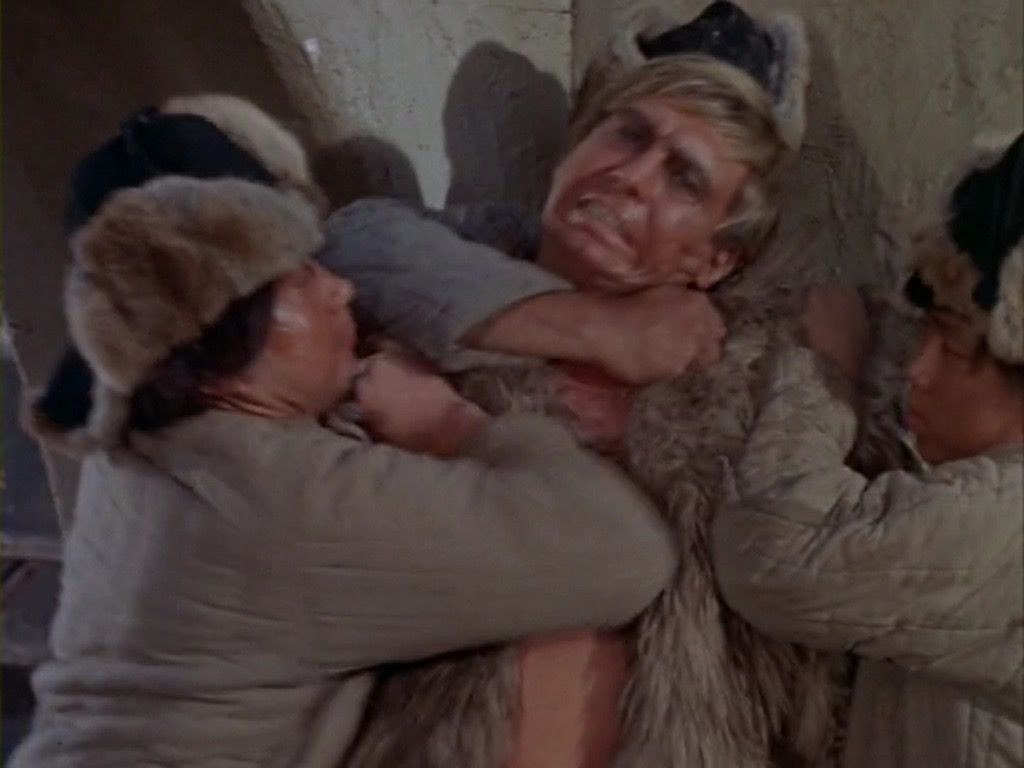
He's got good reasons for thinking there is a something special going on as the villagers here (the Yangs and the Kohms) can live to be over 1,000.
There's action, like Captain Tracey phasering a Red Shirt to keep him from calling he Enterprise for help.
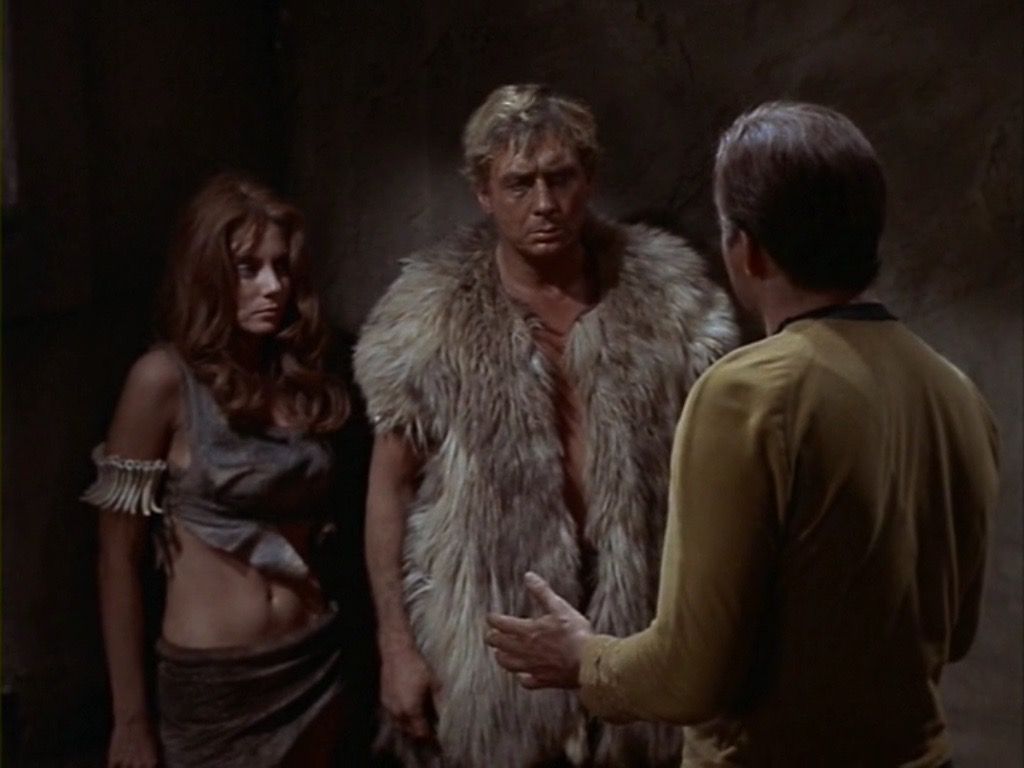 There's a savage Yang chief (Cloud William) and his hot wife, who get thrown into a cell and fight with Kirk.
There's a savage Yang chief (Cloud William) and his hot wife, who get thrown into a cell and fight with Kirk.
There's Dr. McCoy who discovers that the terrible disease that killed the crew of the Exeter is no big deal at all, just spend enough time on the planet and everthing's just fine. McCoy also gives a warning about it as the "infection resembles one developed by Earth during their bacteriological warfare experiments in the 1990s." Let the be a lesson kids of the 60's, don't grow up to dabble in biological warfare.
McCoy even discovers that Tracey's Fountain of Youth isn't really a thing after all. So why do the natives here live so long? Darwin. "Survival of the fittest, because their ancestors who survived [the bacteriological war] had to have a superior resistance. Then they built up these powerful protective antibodies in the blood during the wars."
Kirk and Tracey fight, with an axe no less, before the hordes of Yangs that take over town and make everyone a prisoner. They fight again later, to the death, for the Yangs to see who's telling the truth. Good always defeats Evil, you know.
Spock even gets compared with the Devil (Evil One).
So what's not to like?
Plenty.
Alas, this is another episode with a world that's parallel to Earth, which we've seen too often. Neither Miri nor Bread and Circuses were anything to be proud of. At least in A Piece of the Action, the Earth-based culture was at due to cultural contamination.
Our first hint of problems in The Omega Glory come when Kirk in in the cell with Cloud William (and his hot wife). As they fight, Kirk speaks to Spock, who is in the next cell, about how they might gain their freedom. That gets the attention of Cloud William, who describes 'freedom' as a "worship word." Okay, yeah. We all love freedom. I mean, if you don't love freedom you must be some kind of a communist, or in this case a Kohm. Yes, the locals on planet Omega IV are Yankees (Yangs) and Communists (Kohms). As Spock says, "The parallel is almost too close, Captain. It would mean they fought the war your Earth avoided, and in this case, the Asiatics won and took over this planet."
"The parallel is almost too close." Seriously? Almost?! Unfortunately, the parallel is even closer.
If you are a good patriot, I guess you should be happy that on planet Omega IV the Yankees finally beat the Communists and you should watch The Omega Glory on Flag Day, Independence Day and especially on Constitution Day, but I think I'll pass. Had the story not taken us to a parallel Earth, I think it could have ended up a winner, but as it stands its not very good.
Next up is the last episode of TOS Season Two Assignment: Earth. Thankfully, it is a better episode.
The Omega Glory is a pretty good episode of Trek, until it isn't.
The Omega Glory has got a lot going for it. There's another Federation starship, the Exeter, with a crew that has been killed by an awesome plague where their bodies were crystalized.
There's the Exeter's captain, Ron Tracey (played by Morgan Woodward, who you might remember as Dr. Simon van Gelder in Dagger of the Mind), a man that has violated the Prime Directive by phasering hundreds of natives so that he can live long enough to find the secret to what he thinks is a fountain of youth.

There's action, like Captain Tracey phasering a Red Shirt to keep him from calling he Enterprise for help.
 There's a savage Yang chief (Cloud William) and his hot wife, who get thrown into a cell and fight with Kirk.
There's a savage Yang chief (Cloud William) and his hot wife, who get thrown into a cell and fight with Kirk. There's Dr. McCoy who discovers that the terrible disease that killed the crew of the Exeter is no big deal at all, just spend enough time on the planet and everthing's just fine. McCoy also gives a warning about it as the "infection resembles one developed by Earth during their bacteriological warfare experiments in the 1990s." Let the be a lesson kids of the 60's, don't grow up to dabble in biological warfare.
McCoy even discovers that Tracey's Fountain of Youth isn't really a thing after all. So why do the natives here live so long? Darwin. "Survival of the fittest, because their ancestors who survived [the bacteriological war] had to have a superior resistance. Then they built up these powerful protective antibodies in the blood during the wars."
Kirk and Tracey fight, with an axe no less, before the hordes of Yangs that take over town and make everyone a prisoner. They fight again later, to the death, for the Yangs to see who's telling the truth. Good always defeats Evil, you know.
Spock even gets compared with the Devil (Evil One).
So what's not to like?
Plenty.
Alas, this is another episode with a world that's parallel to Earth, which we've seen too often. Neither Miri nor Bread and Circuses were anything to be proud of. At least in A Piece of the Action, the Earth-based culture was at due to cultural contamination.
Our first hint of problems in The Omega Glory come when Kirk in in the cell with Cloud William (and his hot wife). As they fight, Kirk speaks to Spock, who is in the next cell, about how they might gain their freedom. That gets the attention of Cloud William, who describes 'freedom' as a "worship word." Okay, yeah. We all love freedom. I mean, if you don't love freedom you must be some kind of a communist, or in this case a Kohm. Yes, the locals on planet Omega IV are Yankees (Yangs) and Communists (Kohms). As Spock says, "The parallel is almost too close, Captain. It would mean they fought the war your Earth avoided, and in this case, the Asiatics won and took over this planet."
"The parallel is almost too close." Seriously? Almost?! Unfortunately, the parallel is even closer.
Yeah, the U.S. flag comes in and Cloud William recites the f'ing Pledge of Allegiance.
But wait, there's more. Cloud William has the U.S. Constitution too. Sure, we get to hear Kirk giving a dramatic reading of the Preamble to the Constitution, but really? Is this necessary? Apparently so. If you are a good patriot, I guess you should be happy that on planet Omega IV the Yankees finally beat the Communists and you should watch The Omega Glory on Flag Day, Independence Day and especially on Constitution Day, but I think I'll pass. Had the story not taken us to a parallel Earth, I think it could have ended up a winner, but as it stands its not very good.
Next up is the last episode of TOS Season Two Assignment: Earth. Thankfully, it is a better episode.
